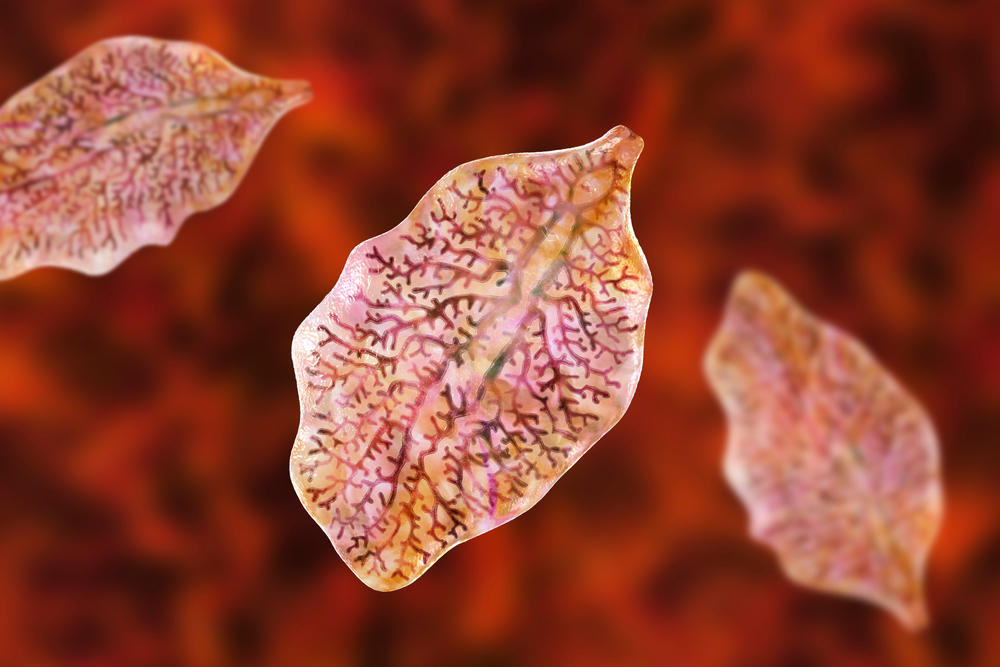Asia is grappling with a sinister trio of liver flukes: Clonorchis sinensis, Opisthorchis viverrini, and Metorchis conjunctus. These parasitic flatworms wreak havoc on human health, particularly in areas with poor sanitation and widespread consumption of raw or undercooked fish.
In this article, we’ll explore the liver flukes’ life cycle, their impact on human health, and strategies for prevention and treatment.
The Life Cycle: A Sinister Journey
Liver flukes have a complex life cycle involving multiple hosts. Freshwater snails serve as their first intermediate host, where the flukes’ larvae (miracidia) develop into cercariae. The cercariae then infect fish, the second intermediate host, and become encysted metacercariae. Humans and other mammals become infected by consuming raw or undercooked fish containing these encysted larvae.
Clonorchis sinensis: The Chinese Liver Fluke
Clonorchis sinensis is the most common liver fluke in Asia, with an estimated 15 million people infected in China alone. Once inside the human body, adult flukes can live in the bile ducts for years, causing inflammation, obstruction, and even liver cirrhosis. Long-term infection can lead to cholangiocarcinoma, a rare but lethal form of bile duct cancer.
Opisthorchis viverrini: The Southeast Asian Liver Fluke
Opisthorchis viverrini is prevalent in Southeast Asia, particularly in Thailand, Laos, Cambodia, and Vietnam. Like Clonorchis sinensis, this liver fluke resides in the bile ducts and can cause severe inflammation, bile duct obstruction, and cholangiocarcinoma. The International Agency for Research on Cancer (IARC) classifies Opisthorchis viverrini as a Group 1 carcinogen.
Metorchis conjunctus: The Lesser-known Liver Fluke
Metorchis conjunctus is less common than its counterparts but can still be found in certain areas of Asia. This liver fluke also inhabits the bile ducts, leading to similar health problems, including inflammation, obstruction, and an increased risk of cholangiocarcinoma.
Prevention: Breaking the Cycle
Preventing liver fluke infection is crucial, particularly in Asia, where these parasites are rampant. Key preventive measures include:
- Safe food handling: Avoiding consumption of raw or undercooked fish and ensuring proper food preparation can significantly reduce the risk of infection.
- Improved sanitation: Investing in better sanitation systems can help limit the spread by reducing contamination of freshwater sources.
- Health education: Public health campaigns can raise awareness about the dangers of liver flukes and encourage safer food handling practices.
Treatment: Banishing the Flukes
Praziquantel is the drug of choice for treating liver fluke infections. It is effective against all three species and is typically well-tolerated. However, reinfection can occur if preventive measures are not maintained. In some cases, surgical intervention may be necessary to address bile duct obstruction or complications arising from chronic infection.
Conclusion
Liver flukes are a significant health threat in Asia, with millions of people at risk of infection. By understanding the life cycle of Clonorchis sinensis, Opisthorchis viverrini, and Metorchis conjunctus, and implementing preventive measures and effective treatment, we can work towards reducing the impact of these parasitic villains and improving public health throughout the region. Public awareness campaigns, sanitation improvements, and regular screenings can help in early detection and treatment of infections. By joining forces, communities, healthcare professionals, and government agencies can collaboratively combat this silent menace, ensuring a healthier future for millions of people across Asia.












